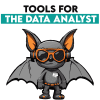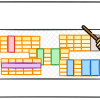Latest Posts |
|---|
|
More Recent Posts
- 3 New Prompt Engineering Resources to Check Out
- Data Science Degrees vs. Courses: The Value Verdict
- 5 MLOps Courses from Google to Level Up Your ML Workflow
- The Ultimate AI Strategy Playbook
- Advance Your Tech Career with These 3 Popular Certificates
- Free Python Resources That Can Help You Become a Pro
- A Starter Guide to Data Structures for AI and Machine Learning
- Is Data Science a Bubble Waiting to Burst?









